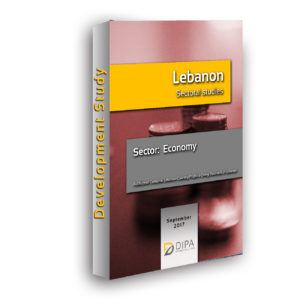 Lebanon is one of the smallest countries in the region, but strategically located on the Eastern Mediterranean, it is an important commercial hub for the Middle East. A heterogeneous country, highly divided along both religious and confessional lines, Lebanon has a relatively young population. The Lebanese system of government reflects a combination of the prime ministerial and presidential systems. A lengthy power vacuum was recently filled with the appointment of Michel Aoun as President and Saad Hariri as Prime Minister.
Lebanon is one of the smallest countries in the region, but strategically located on the Eastern Mediterranean, it is an important commercial hub for the Middle East. A heterogeneous country, highly divided along both religious and confessional lines, Lebanon has a relatively young population. The Lebanese system of government reflects a combination of the prime ministerial and presidential systems. A lengthy power vacuum was recently filled with the appointment of Michel Aoun as President and Saad Hariri as Prime Minister.
GDP in Lebanon was worth USD 47,1 billion in 2015, which in terms of per capita was recorded at USD 7,062. If the conflict in neighbouring Syria eases, GDP growth is expected to increase to 3% in 2017, and return to its potential, estimated at 4% from 2019 onward. Lebanon is a predominantly importing country, characterized by large trade deficits, with net trade in goods and services amounting to USD -10.9 billion in 2015. The inflation rate started decreasing in 2013 and by 2015 the inflation has sharply decelerated to -3.7%, while the unemployment rate stands at 6.4 % in 2014, although considerably higher for youth and women. Lebanon has suffered from increasing fiscal deficits since 2011 and reached LL 6,882 billion in 2015, representing 2,96% of the GDP.
The business environment in Lebanon is relatively restrictive, with the World Bank ranking it 126 out of the 189 countries surveyed in its Doing Business 2017. In terms of Global Competitiveness, the World Economic Forum ranks Lebanon as the 101st most competitive nation in the world (out of 138 economies). This study is a part of the Development Study and analyses the economy sector.
The overall prospects for the Lebanese economy and industrial sectors are highly dependent on favorable economic conditions and political stability domestically and regionally.
1. Country Profile
1.1 History of Lebanon
1.1.1 Early History
1.1.2 The Civil War
1.1.3 Recent Developments
1.1.4 Relationships with neighbouring states
1.2 Geography
1.2.1 Area and Boundaries
1.2.2 Topography
1.2.3 Land Use and Water Resources
1.2.4 Environmental Concerns
1.3 People and Society
1.3.1 Population and National Identity
1.3.2 Demographics
1.3.3 Societal Characteristics
1.4 Government
1.4.1 Framework of Government
1.4.2 Executive Branch
1.4.3 Legislative Branch
1.4.4 Judicial Branch
1.4.5 Political Parties and Leaders
1.5 Main Infrastructure
1.5.1 Transportation
1.5.2 Tele Communications
1.5.3 Energy
1.6 Key Industries and National Resources
2. Economic Monitor
2.1 Economic System and History
2.2 National Accounts
2.2.1 GDP
2.2.2 Inflation and Labour market
2.3 Public Finance
2.3.1 State Budget
2.3.2 Public Debt
2.4 External Sector
2.4.1 Balance of Payments
2.4.2 Foreign Direct Investment
2.5 Forecast of main economic indicators
3. Financial Sector and Banking
3.1 Banking Sector
3.1.1 Central Bank of Lebanon (Banque du Liban)
3.1.2 Commercial Banks
3.2 Money Supply
3.3 Capital and Financial Markets
3.3.1 The Stock Market
3.3.2 Exchange and Interest Rates
4. Doing Business
4.1 Starting a Business
4.2 Dealing with Construction Permits
4.3 Getting Electricity
4.4 Registering Property
4.5 Getting Credit
4.6 Protecting Minority Investors
4.7 Paying Taxes
4.8 Trading across Borders
4.9 Enforcing Contracts
4.10 Resolving Insolvency
4.11 Measuring competitiveness by the World Economic Forum
4.12 Corruption Index
4.13 Public – Private Partnerships
